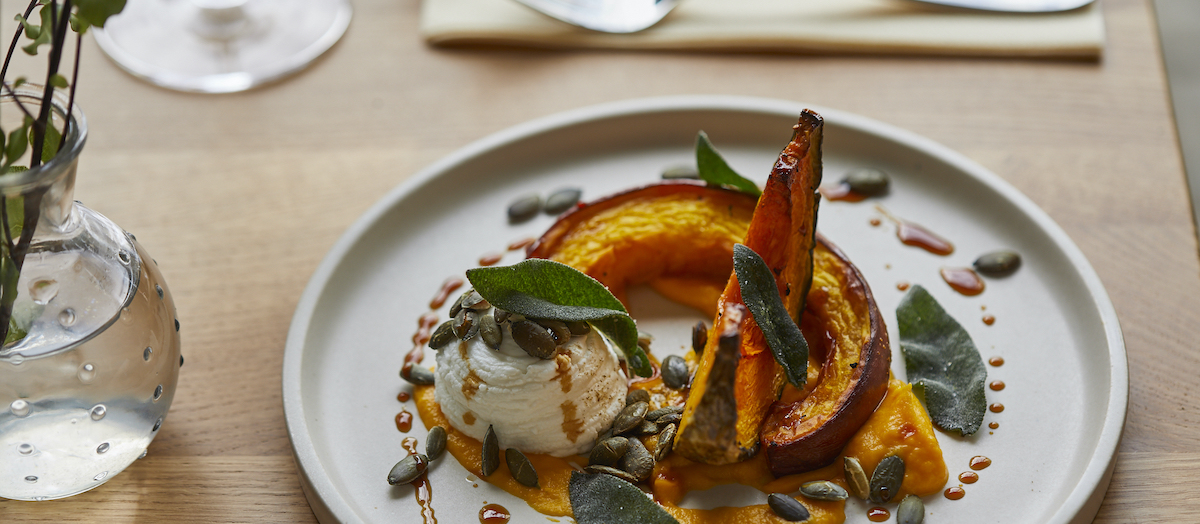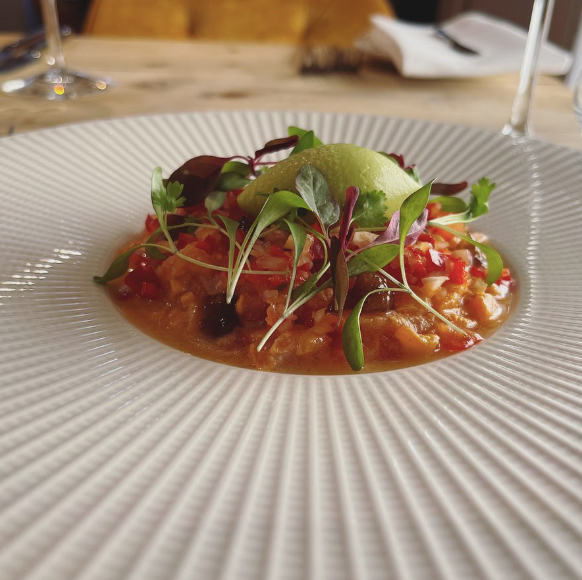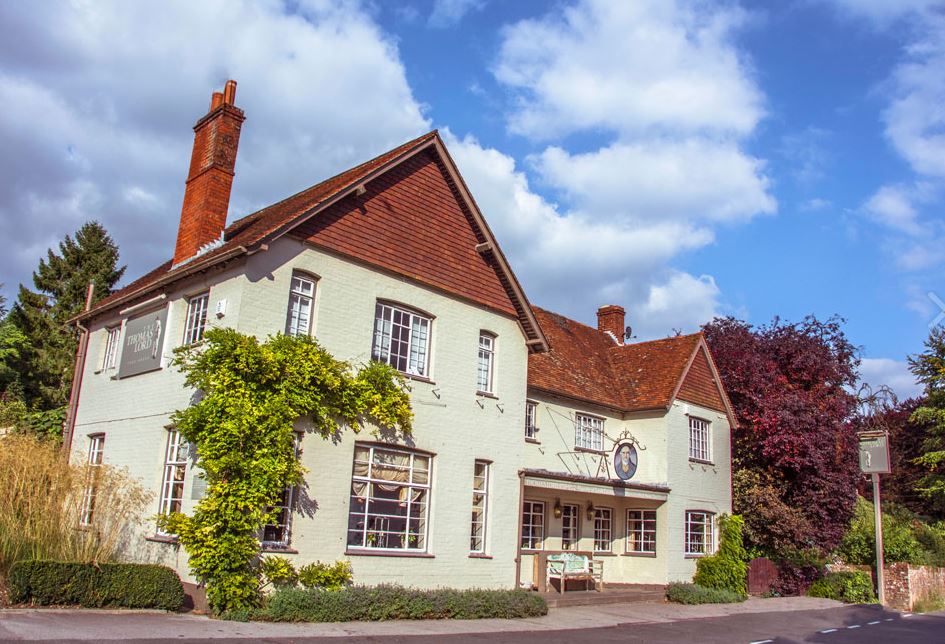Inadown Farm Holiday Homes are five well-presented holiday homes designed to offer a relaxing…
Jane Austen's Chawton

A gentle ramble through the pastoral countryside that surounds Chawton, where Jane Austen sought inspiration for her great novels.
5.8 miles (9.4kms)
About the walk
Jane Austen was born in Steventon, near Basingstoke, and spent the first 25 years of her life there before the family moved to Bath in 1801. Following spells in Clifton and Southampton, she moved to Chawton Cottage with her mother and sister Cassandra in July 1809. Her house, now called Jane Austen’s House Museum, belonged to her brother Edward, who had inherited the estate of Chawton from his uncle Thomas Knight, whose family had purchased the manor in 1578. It was Edward who renovated the building, adding three further bedrooms so that his mother and sisters could live in comfort and entertain friends. Jane wrote about the cottage to her brother Francis Austen in 1809: ‘Our Chawton House, how much we find/Already in it to our mind:/And convinced, that when complete/It will all other houses beat/That ever have been made or mended/With rooms concise and rooms distended.’ It was at Chawton Cottage that she spent her most active writing phase. At a small table in the living room she began to revise her earlier manuscript novels – Sense and Sensibility, Pride and Prejudice and Northanger Abbey – and then wrote her other novels Mansfield Park, Emma and Persuasion. Jane became ill in 1816 and moved to Winchester to seek medical advice. She died in 1817 aged 41 and is buried in Winchester Cathedral. You can visit the charming red-brick house which has been beautifully restored to look as it would have done in the 1800s. It is more than a museum, as it succeeds in capturing the atmosphere of her modest lifestyle through collections of family mementoes and documentary material which give a real insight into her life and writings. View the drawing room, the parlour where she wrote her novels, and the bedrooms, then browse in the bookshop and enjoy a picnic in the flower-filled garden. The walk explores some of the peaceful open countryside through which Jane Austen would have strolled. The furthest point on the walk is Upper Farringdon. She often visited the village to see Harriet Benn, whose father was the vicar of All Saints Church. ‘Harriet Benn,’ she wrote, ‘sleeps at the Great House (Chawton House) to-night and spends to-morrow with us; and the plan is that we should all walk with her to drink tea at Faringdon’ (sic).Jane Austen's House
Tea at Farringdon
Walk directions
Turn left out of the car park, opposite Jane Austen’s House Museum, and walk along a dead-end lane. Pass the school and turn right into Ferney Close. Keep to the left and bear left along a path beside Ferney Bungalow on St Swithuns Way to a gate. Go through the gate and continue along the enclosed path to a stile, then descend steps and cross (with care) the A32.
Climb steps directly opposite, go through a metal kissing gate and walk along the left-hand field edge, leading to a stile on your left. Go through a copse, following the path right, then left, between fields. Keep straight ahead along a former railway track, go under a brick-arch bridge, and continue for 650yds (594m) beyond the barn near Park Cottage.
Just before a second arch, bear left off the old railway line and follow the field edge until it jinks right into the trees and then left on a metalled driveway. Cross the A32 and join a track leading to Manor Farm. At a crossing of tracks, just before a brick building with solar panels on its roof, turn right alongside the Village Garden. Take the narrow path left at the bottom of the garden, by the tree stump to reach a track.
Turn right to the lane in Upper Farringdon, towards Massey’s Folly. Turn left into the churchyard past the 2,000-year-old tree and leave by the main gate, turning left along the lane. Keep ahead along Church Road and then Gaston Lane for half a mile (800m) to a signposted track on your left.
Turn left, then soon take the grassy track right, just before the track bends left. Climb the stile ahead into open pasture, following the brook on your left, under the power lines, to a second stile; after 170yds (155m) cross the bridge over the brook on your left. Keep going, with the brook to your right, to a stile at the end of the field.
Turn right to cross the brook, and follow it left to the road, crossing a stile to reach the B3006. Turn right, then cross the road to join a tarmac track and follow it to Truncheaunts Farm. Cross the stile, on the left at the fingerpost, opposite the drive up to the farmhouse, and then cross the footbridge, and follow the right-hand field edge, between two fences. Bear left past the metal barn and follow the track towards the B3006. Bear right through a gap, cross the drive and a stile. Go through the gap to the road, opposite Shepherd’s Court. Cross over, and through a gate, walk down a concrete track, and turn right through a gate at the end. Follow the right-hand field edge to a gate.
Bear right across the field to reach two stiles set in the hedge and bear slightly left across three more fields and stiles towards Eastfield Farm. Cross the drive and pass through a kissing gate, walking through a field to reach a gate beside woodland.
Follow the path straight down through the copse to a metal kissing gate. Bear slightly left across a field to a further stile. Continue ahead to a metal kissing gate in the wall and take the narrow footpath back to the main village street. Turn left to the car park.
Additional information
Field paths, old railway track, some road walking, 14 stiles
Gently rolling farmland interspersed with woodland
Keep dogs under control at all times
OS Explorer OL33 Haslemere & Petersfield
Free village car park opposite Jane Austen's House Museum
None on route
WALKING IN SAFETY
Read our tips to look after yourself and the environment when following this walk.
Find out more
Also in the area
About the area
Discover Hampshire
Hampshire’s varied landscape of hills and heaths, downlands and forests, valleys and coast is without rival in southern England. Combine these varied landscapes and terrains with secluded and idyllic villages, complete with thatched and timber-framed cottages and Norman churches, elegant Georgian market towns, historic ports and cities, restored canals and ancient abbeys, forts and castles, and you have a county that is paradise for lovers of the great outdoors.
If you’re a walker, stride out across the high, rolling, chalk downland of the north Hampshire ‘highlands’ with far-reaching views, walk through steep, beech-clad ‘hangers’ close to the Sussex border. Or perhaps take a gentler stroll and meander along peaceful paths through unspoilt river valleys, etched by the sparkling trout streams of the Test, Itchen, Avon and Meon. Alternatively, wander across lonely salt marshes and beside fascinating coastal inlets or, perhaps, explore the beautiful medieval forest and heathland of the New Forest, the jewel in Hampshire’s crown.
Nearby stays
Restaurants and Pubs
Nearby experiences
Recommended things to do
Why choose Rated Trips?
Your trusted guide to rated places across the UK
The best coverage
Discover more than 15,000 professionally rated places to stay, eat and visit from across the UK and Ireland.
Quality assured
Choose a place to stay safe in the knowledge that it has been expertly assessed by trained assessors.
Plan your next trip
Search by location or the type of place you're visiting to find your next ideal holiday experience.
Travel inspiration
Read our articles, city guides and recommended things to do for inspiration. We're here to help you explore the UK.













